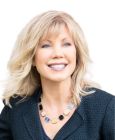Midlife
The Post-Pandemic Mid-Life Crisis
Research shows current mid-lifers are not faring as well as prior generations.
Posted September 29, 2023 Reviewed by Tyler Woods
Life was very different when Erik Erickson defined mid-life (ages 40-65 years) as a type of crossroads between generativity and stagnation in his psychosocial stages model in 1950.
Life expectancy was only 65.6 for men and 71.1 for women at the time (UC Berkely, n.d.). World War II had ended five years prior, and young adults were having record births that ushered in the baby boomer generation—who would then go on to experience a series of dramatic life-changing technological revolutions and live longer than their parents.
While baby boomers appeared to thrive through different life stages, something happened to the youngest baby boomers, Generation X, and the oldest millennials that have reached mid-life. Despite abundant advances in technology that ease many of life’s hardships and a burgeoning anti-aging and longevity industry that is projected to reach US$64 billion by 2026, today’s mid-lifers have higher rates of mental and physical ailments than their counterparts in prior generations. And that was before the pandemic.
Here is a look at what some of the research has found, along with some counseling keys that may help.
In their book, Deaths of Despair and the Future of Capitalism, Case and Deaton (2020) point out that a combination of economic difficulty, broken family structures, unequal access to healthcare, and reduced employment opportunities due to a lack of higher education have resulted in deaths of despair from suicide, drug overdoses, and alcoholism. Interestingly, Infurna et al. (2022) found a cultural discrepancy in mid-life health and well-being in their study that looked at mid-lifers in the U.S., Australia, Germany, South Korea, and Mexico. They found more mental health difficulties and declined physical health in the U.S. and Australia.
Women have lower rates of mental and physical well-being than men in the U.S., Infura, et al. found, which echoes research by Barrett and Toothman (2017) indicating women experienced higher rates of aging anxiety due to fears about declining health, declining attractiveness, and reduced fertility—along with increased social isolation and reduced social support.
The pandemic added another layer of anxiety and grief for many mid-lifers, as working from home became a new norm for some. While convenient, working from home can decrease critical social interaction.
In addition, people are still grieving from losses of loved ones from the pandemic, and the loss of needed social interaction that resulted from quarantining and social distancing.
Being a caregiver to parents, raising children, and/or (re)launching adult children who are also still trying to adapt in a post-pandemic world present still more challenges for the mid-lifer.
Moreover, as Infurna et al. (2022) point out, careers in the U.S. are notoriously unstable and today's companies are not as loyal to employees as they were in previous generations. I presented similar research 13 years ago on the escalation of anxiety in employees who experience repeated attachment injuries from unstable employers and insecure working relationships—which reinforce anxious workplace cultures and difficulties in family relationships. Many of my clients in mid-life have also expressed the added anxiety of feeling less employable and relevant in a youth-focused culture.
Counseling Keys for Midlifers
A grim picture may have been painted, but we can re-paint it. Returning to Erickson (1950), he provided marvelous insight and enduring wisdom about our different life stages and the crossroads we can take at each stage. He compares generativity to creativity and describes it as having enriching experiences. Stagnation, on the other hand, represents regressing with an “obsessive need for pseudo-intimacy.” (p. 267)
Without my realizing it, the people in my sacred healing research who experienced a healing crisis followed by some type of miracle healing went on to describe an intense increase in creativity. People felt more in tune with their purpose and had a deep gratitude for life, along with desiring to help others. They were describing a state of generativity, and many described their healing crisis as a wake-up call from a life that could be typical of stagnation.
The mid-life crisis can serve as a healing crisis that asks you to get in touch with your inner purpose. A plethora of research consistently reveals that having an internal locus of control (where you are guiding your life and not leaving it up to the opinions of people around you) enhances mental health, resilience, and self-control. Otherwise, you risk people-pleasing and internalizing other people's opinions about you. Instead, do some journaling and find your truth. Give yourself the time to listen to your heart and begin discerning what you like and respect about yourself instead of what others may like or not like about you. By developing real intimacy with yourself (instead of pseudo-intimacy), you will begin attracting genuine intimacy with others in your life.
A final note on aging: write out all of your fears. Then, take a second look at your list and begin writing something positive and reassuring from your heart. The next time the fears come up in your mind, pretend you hear a little bell and then reassure yourself with the words your wrote from your heart.
References
Barrett, A. E., & Toothman, E. L. (2018). Multiple "Old Ages": The Influence of Social Context on Women's Aging Anxiety. The journals of gerontology. Series B, Psychological sciences and social sciences, 73(8), e154–e164. https://doi.org/10.1093/geronb/gbx027
Erikson, E. H. (1950). Childhood and society. New York: Norton.
Infurna, F. J., Staben, O. E., Lachman, M. E., & Gerstorf, D. (2021). Historical change in midlife health, well-being, and despair: Cross-cultural and socioeconomic comparisons. The American psychologist, 76(6), 870–887. https://doi.org/10.1037/amp0000817Erikson, E. H. (1950). Childhood and society. New York: Norton.




